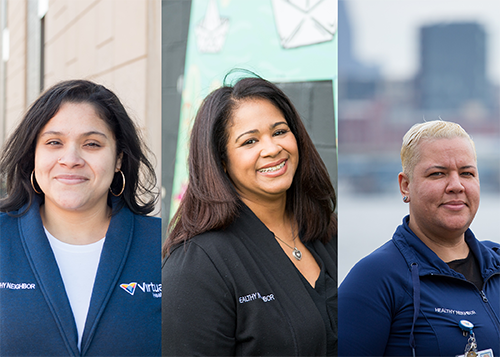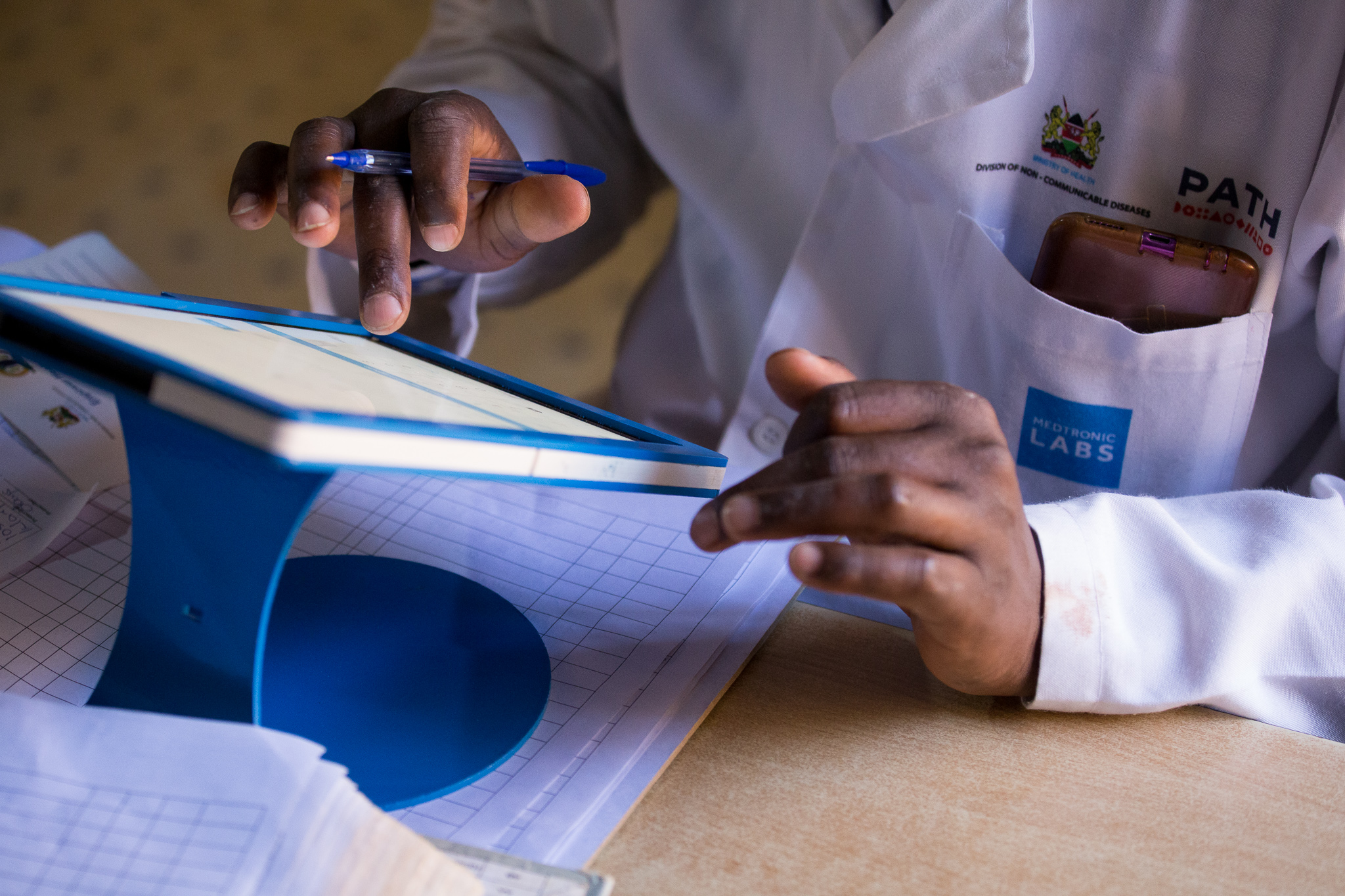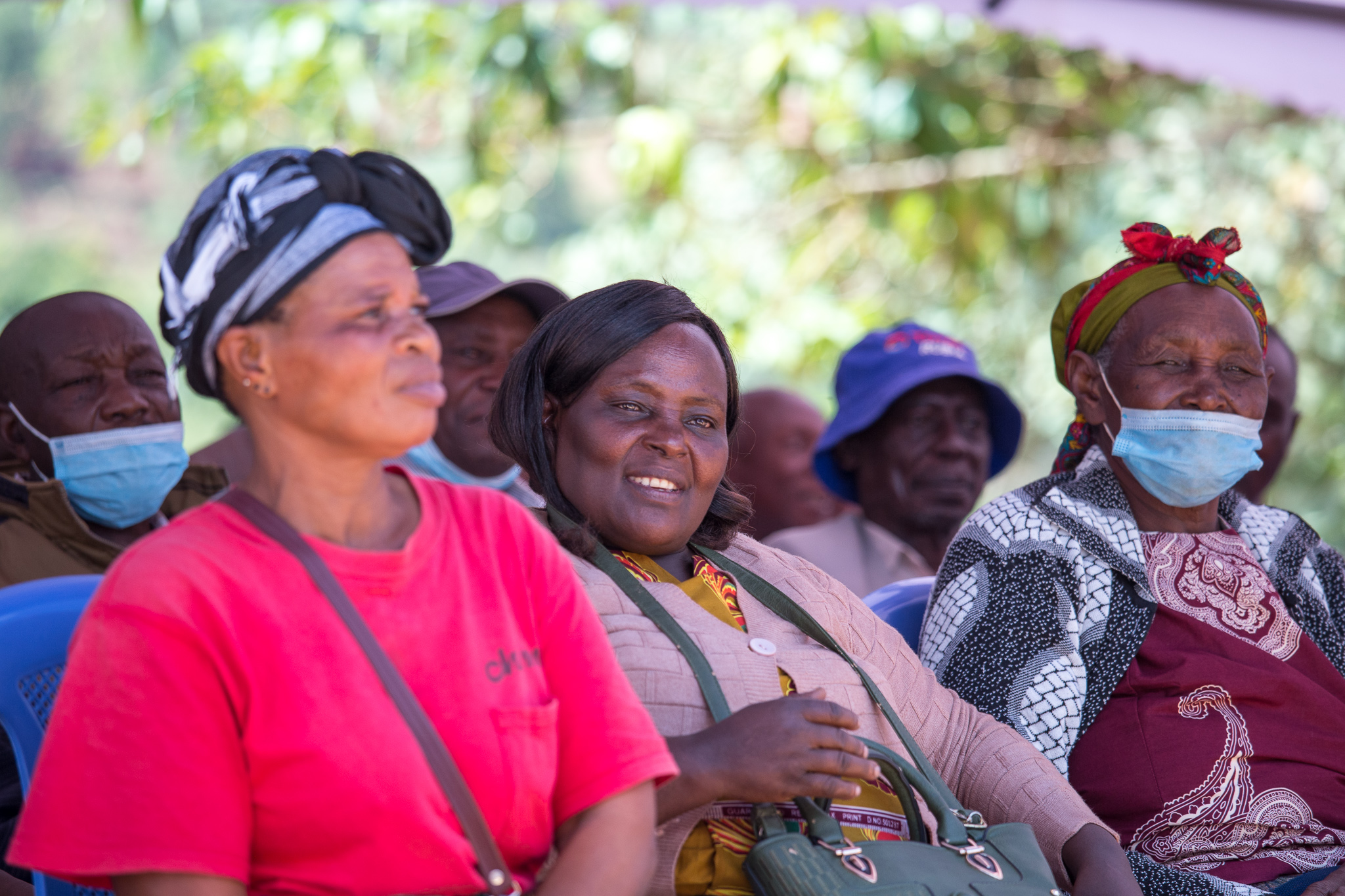The vital role of community health workers
Medtronic LABS pairs tech with people for greater impact
If you didn’t know Fanny Ochoa was visiting Joe Williams* for hypertension and diabetes management, it might take you a few minutes to figure it out.
She weaves conversation into the hour spent in the living room of his New Jersey home. She takes Williams’ blood pressure while asking about how he’s been feeling. His daughter called, so he’s happy.
She checks out the meals he’s been getting from a community program and asks him about the pots of boiling water on the stove.
Ochoa is a community health worker for Healthy Neighbor, a joint program by Medtronic LABS and Virtua Health that aims to improve health outcomes in Camden County, New Jersey.
Since Medtronic LABS launched in 2013, the independent nonprofit with Medtronic funding has enrolled over 224,000 people in one million patientshealthcare and trained over 8,000 community health workers in Kenya, Tanzania, Rwanda, Ghana, Sierra Leone, Bangladesh, Bhutan – and now, the United States.
In 2021, Medtronic, Medtronic LABS, and Virtua Health announced an agreement to help patients manage their chronic diseases in southern New Jersey and beyond. Together, the organizations share a goal to build a proven, replicable model that becomes the benchmark for community healthcare delivery across the U.S.

‘People are the core’
Using LABS’ open-source technology platform SPICE, Ochoa and two other community health workers on Virtua’s health equity team follow up with patients directly in the community to monitor hypertension and type 2 diabetes.
“People are the core. We know there’s a lot of success in having a people-centered approach enabled by tech,” said Dan Master, director of health equity at Virtua Health. “We see it as innovation.”
That innovation means designing a platform that allows community health workers to be fully present and evolving that platform with feedback from community health workers to better achieve clinical and social outcomes for patients.
They are keenly focused on the whole person, connecting their patients to housing, mental health services, Virtua’s Eat Well Food Farmacy, and – at times – even tracking down refrigerators.
“I need to be present. To pay attention,” Ochoa said. “If my head was buried in a tablet, how would I know he’s boiling water for heat?”
Tech – with a human touch
A few blocks over, Karen Fernandez sits next to Marietta Gonzalez* after taking her blood pressure and blood sugar.
The 72-year-old breaks down in tears. She’s lonely, but she says, it’s just part of aging.
Fernandez grabs her hand and tells her she’s not alone.
“It meant a lot to both of us,” Fernandez said. “When you walk into someone’s home – when they open their doors to you and welcome you – you’re doing a service for them, but there’s more to it. In the moment she needed to be heard, I was there to offer comfort.”
And that matters because those needs – the social determinants of health (SDOH) – Fernandez said, could otherwise go unnoticed.
The social determinants of health are a set of non-medical factors that influence health, such as transportation, housing, and food security. They drive up to 80% of health outcomes, according to the Robert Wood Johnson Foundation.
And – in countries of all income levels – the lower someone’s socioeconomic position, the worse their health outcomes, according to the World Health Organization. In Camden County, the life expectancy gap is as much as 16 years compared to more affluent neighborhoods just 6.5 miles apart, said Master.
As community health worker Alexis Nieves puts it: “How can people focus on their health when they don’t know when their lights are coming back on, or when they’re going to eat next?”

Global health, local solutions
At Medtronic LABS, we define ‘global health’ as truly global — not only focused on low- and middle-income countries, but on underserved communities regardless of country.
“We’re adapting the models we’re scaling across Africa and Asia to the U.S. through Healthy Neighbor,” said Head of U.S. Programs, Lauren Leccese. “This is an exciting opportunity to innovate with learnings from global community health solutions and local partners.”
That innovation includes using technology, data, community-based care models, community health workers, and evidence-based practices to reduce health disparities in a meaningful, sustainable, and scalable way.
And that looks like Ochoa, Nieves, and Fernandez meeting patients like Williams in his dimly lit living room to make sure his blood pressure is within healthy range. And that his heat works.
*Names changed to protect patient privacy
Learn more about how Medtronic LABS develops community-based, tech-enabled solutions for underserved patients, families, and communities across the world.
L021-12122023
Related content



